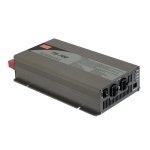Just_Ed said:
Disconnecting the RV batteries, and using my battery pack instead.
Would I still need to use the 48v to 12v converter?
if the rv is a 12v system (two 12v in parallel), then yes, otherwise the much much higher voltage of your 48v battery will damage or destroy anything unable to handle the higher voltage (lights will burn out, electronics will fail/blow up, etc).
if the rv is a 24v system (two 12v in series), you still need a converter for the same reasons (though the degree of damage could be less if you didn't, depending on the designs of stuff connected at the time).
so you have ot use a 12v (again, 13.6v would be better) (or 24v, really 27.2v) converter capable of at least as much current as the system will ever draw, at peak. so if there are motors or other things on the system (coolers or heaters, fridges, etc) the converter has to be able to handle the very high startup peak currents those may draw, and it must handle enough current to satisfy *all* of them at the same time, should it happen that they all ever turn on at once, by random chance, if they're on thermostats/etc.
if it can't handle the current, the cheap ones may just die. better ones will just shut off completely until they're reset (by taking all load off them, sometimes by turning the power input off and back on). depends on how they'r edesigned inside. a current-limting converter, like those meanwells, would just drop it's output voltage until the current limit equals the demand on it, or shut off if it can't drop any further.
a fuse on the output, rated for at most the max current the converter is rated for, would help prevent converter damage, if it blows fast enough.
if all you have is lights on the system, the converter you're getting is probably ok, as long as they don't total up to more current than the converter can output.
if you have high draw stuff on there, like refrigerators, air conditioners/heaters, stove/oven, etc., it can't handle those.





